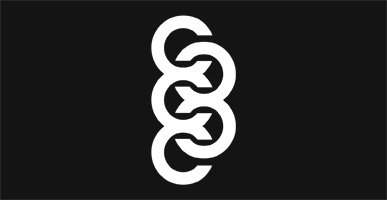The five Cs of the design studio
1977 Design partner and creative director Paul Bailey outlines the five Cs needed to create a successful design studio.

1. Clients. If you are going to set up a design studio, then you need someone to design for.
Relationship: Find the right clients for you and build a relationship. Build an understanding of what the client hopes to achieve from projects you work on together. It is important that you and the client are clear on the ultimate aims for any design work. Obviously the quality of work is important but it is much easier to develop successful work when you have a good understanding with a client. In my experience clients can become ambassadors for your studio, even acting as unofficial new business developers.
Relationships: However, it’s not just about a single relationship. Build relationships with a number of people at a client company. This will help you grow the client base of your studio. People move jobs and by developing relationships with more than one person then when someone moves you still have a contact at your client company, but you now have a contact at a new company too.
2. Colleagues. Eventually your studio will grow and will need to work with other people. Employing people is a big step, but one a lot of studios will do at some point.
Diversity: Do not look for clones of yourself – having everyone in the studio doing the same thing is not good. If you’re a little weak in a certain area then try to bring in people whose strengths are in these areas. Build diverse skill and character sets in the studio. Never be afraid to employ designers who are better than you.
Personality: Character and personality is just as important as design ability in a small studio. You need people who know their own mind. The worst thing you can have in a studio is someone who agrees with everything you say. A bit of creative friction is good, as is a questioning mind. It’s about having a studio where people bring their own opinions to the table whilst valuing all other opinions too.
3. Collaborators. You can’t do everything yourself, and neither should you. You will need other people and companies to work with you to realise most projects.
Specialise: Be great at what you do and work with collaborators who are great at what they do. At 1977 Design we’ve worked with amazing web developers, App developers, photographers, illustrators, copywriters, etc. Be niche and collaborate. Use technology and the connectedness now available to work with collaborators anywhere in the world.
Transparent: Be transparent about your working process. Don’t try to hide the way you work, make it your selling point. If you work with collaborators, then highlight the fact that you have built a team of specialists for a project – that you are working with people who are the best at what they do.
4. Confidants. This is vital and is very often overlooked. When you run your own studio you need people you can trust to talk to.
Advice: You need people you can trust to give you right advice. As the head of a studio there is no-one internally above you to give you advice. Confidants can be people with experience of other areas of business or running companies, they don’t have to be designers. In fact it is very useful to get advice from non-designers, for example a different perspective for us comes from our financial advisor. Advice from people who have been there and done it in business is invaluable. We also found it useful to join an industry body, such as the DBA, for information and advice.
Selective: However, don’t take their advice as set in stone. It is advice, it is valuable input, it should give you support, but ultimately it is your studio. You will succeed or fail by your decisions, so make sure that they are your decisions. If you make a decision which goes badly, at least you made a decision.
5. Central Character. The final and most important C – you.
Self-belief: Be yourself and go for it. You are the most important person in your studio. Take advice but do it your way. You have to know that you are going to be working very hard. However, it is rewarding. It’s my experience that most designers think that they can do it better than the studio they currently work for. Moaning about your workplace is easy, talk is cheap. If you think you can do it better then do it.
Learn: Always learn. You will succeed and fail by your decisions, so learn from any mistakes. Everyone makes mistakes but what counts is how you react to those mistakes. Never make the same mistake twice, otherwise you’re not really learning. Remember you are running a business. Yes we are designers, yes we are creative, but if you are working with clients you are providing a service and you are running a business, so treat it with the respect it deserves and requires.
Ignore me: Feel free to ignore everything I have said here. Remember it is your studio. If you think the best thing to do is the opposite of everything I have said then great, because you’ve listened to my opinions but have made your own decisions.
Paul Bailey is partner and creative director at 1977 Design. (see @paulmarkbailey and @1977design.) This is a version of a talk originally given for Glug.
-
Post a comment




